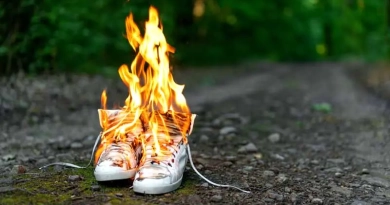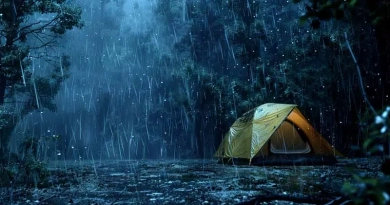
How Do I Choose The Right Sleeping Bag For A Hiking Trip?
Choosing the Right Sleeping Bag for a Hiking Trip: A Trekker’s Guide
As twilight descends over the campsite, with the last glimmers of sunlight ebbing across the rugged landscape, a crucial piece of gear rolls out beneath the stars—the sleeping bag. It’s here, under the quiet expanse of the night sky, that one pivotal question surfaces: How do I choose the right sleeping bag for a hiking trip? This isn’t merely a matter of comfort; it’s about ensuring restorative sleep after a day’s trek, vital for the challenges that await.
Understanding the Importance of the Right Sleeping Bag
Nestled under the expanse of a starlit sky, as the cool air whispers through the trees, the importance of a good sleeping bag becomes abundantly clear. It’s not just a place to rest; it’s your primary defense against the nocturnal elements of the wild. The stakes are high—choose poorly, and you face either a shivering night or an uncomfortably warm ordeal. Each morning’s awakening should be a testament to a well-chosen sleeping bag, not a trial of your resilience.
The Complexity of Choosing a Sleeping Bag
The market offers a dizzying array of sleeping bags, each touting different materials, shapes, and temperature ratings. Navigating this variety is no small task, especially when the success of your hiking venture hangs in the balance.
Key Considerations:
- Temperature Rating: This is the linchpin in selecting the right sleeping bag. It’s essential to choose a bag rated for temperatures lower than what you expect to encounter. Opting for a bag designed for slightly colder conditions provides a safety margin that could be crucial on unexpectedly chilly nights.
- Weight and Packability: On multi-day hikes, the weight and volume of your sleeping bag can impact your endurance and comfort. A lighter, more compressible bag eases the burden on your shoulders, allowing you to enjoy the trek more fully without unnecessary fatigue.
- Comfort and Space: Personal comfort preferences play a critical role. The snug fit of a mummy bag may be perfect for some, offering efficient heat retention and lower weight. Others might find the roomier rectangular bags more to their liking, providing the space to stretch and turn but at a cost of increased bulk and weight.
Options and Obstacles in Selection
Choosing the right sleeping bag involves weighing several factors against each other:
- Down vs. Synthetic Insulation: Down insulation is celebrated for its superior warmth-to-weight ratio and compressibility, making it a favorite among seasoned hikers. However, its Achilles’ heel is moisture; when wet, down loses much of its insulating properties. Synthetic fill, while bulkier and heavier, holds up better in damp conditions and dries out faster, offering reliable warmth even when damp.
- Material and Durability: The outer material of your sleeping bag greatly influences its durability. A robust outer shell that can withstand the rigors of camp life while offering water resistance with a DWR (Durable Water Repellent) finish can significantly extend the life of your sleeping bag.
- Shape and Features: The shape of your sleeping bag should align with your thermal needs and comfort preferences. Mummy bags are designed to hug your body closely, minimizing air pockets and maximizing warmth. Rectangular bags, while offering more room to move, tend to be less efficient at retaining heat due to their spacious interior.
Implementing the Best Solution
Making the right choice involves a methodical approach:
Step 1: Research the Conditions: Thoroughly understand the typical and extreme weather conditions of your hiking destination. Historical weather patterns and the latest forecasts should guide your decision.
Step 2: Assess Your Personal Needs: Reflect on your personal comfort preferences and sleeping style. Are you someone who gets cold easily? Do you tend to move a lot in your sleep? These factors will influence your choice between a snug mummy bag and a roomier rectangular model.
Step 3: Invest Wisely: Allocate a portion of your budget towards a high-quality sleeping bag. The right sleeping bag is an investment in your comfort and safety, capable of enhancing your hiking experiences for years.
Step 4: Field Test Your Bag: Before embarking on your journey, spend a night in your new sleeping bag. This trial run will help ensure it meets your comfort and warmth expectations, potentially saving you from a miserable night outdoors.
Essential Resources and Tools
- Sleeping Bag Reviews: Detailed reviews can provide insights from other hikers’ experiences.
- Outdoor Retailers: Staff at specialty stores can offer personalized advice based on your needs.
- Online Forums and Communities: Engage with hiking communities for recommendations and tips.
Rest Assured in the Wild
As the fire dwindles and the forest’s nocturnal symphony takes over, the true value of your sleeping bag becomes undeniably clear. It is not just a piece of gear but a crucial companion that stands between you and the elements. With the right sleeping bag, chosen through careful consideration and thoughtful testing, each night on the trail can be as rejuvenating as the hike itself. This is how you turn a simple sleeping solution into an integral part of your adventure narrative.






